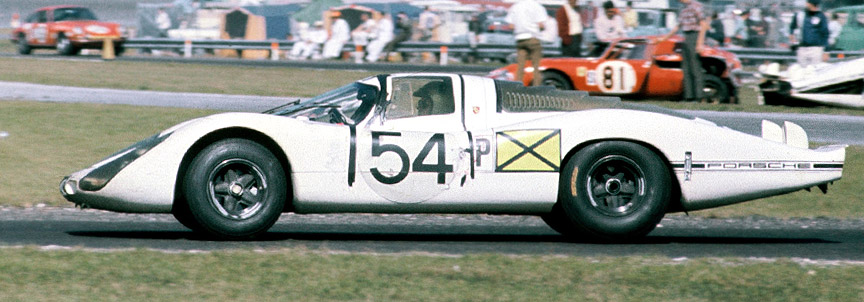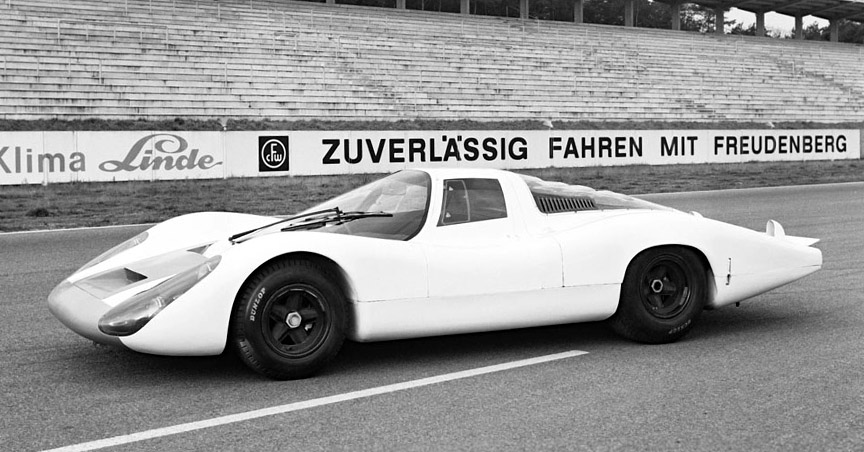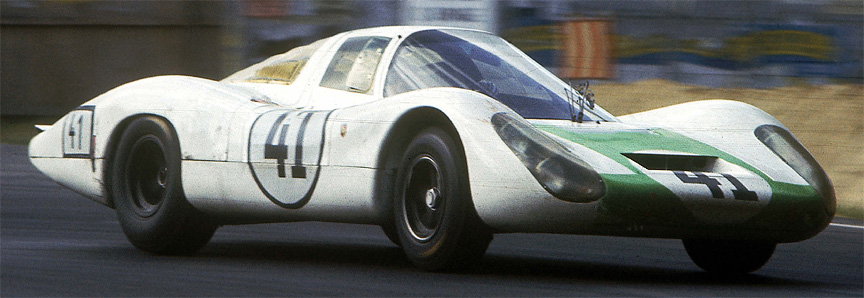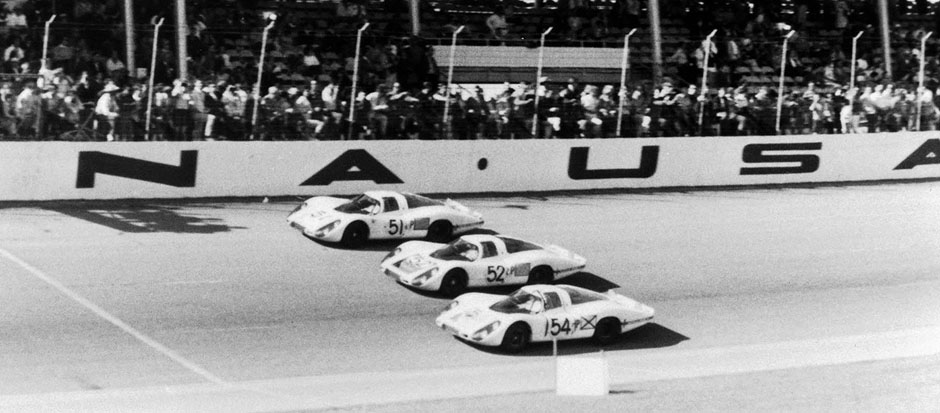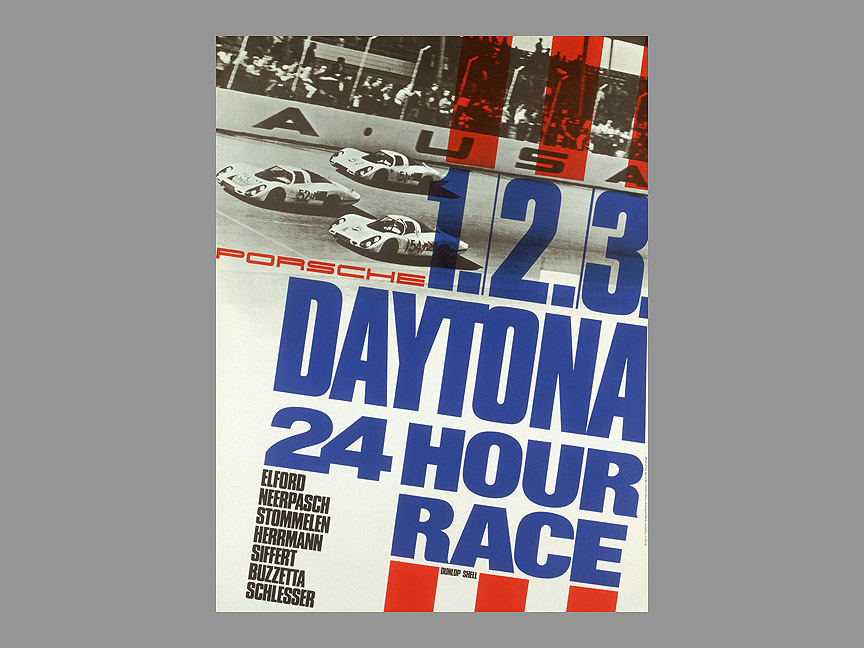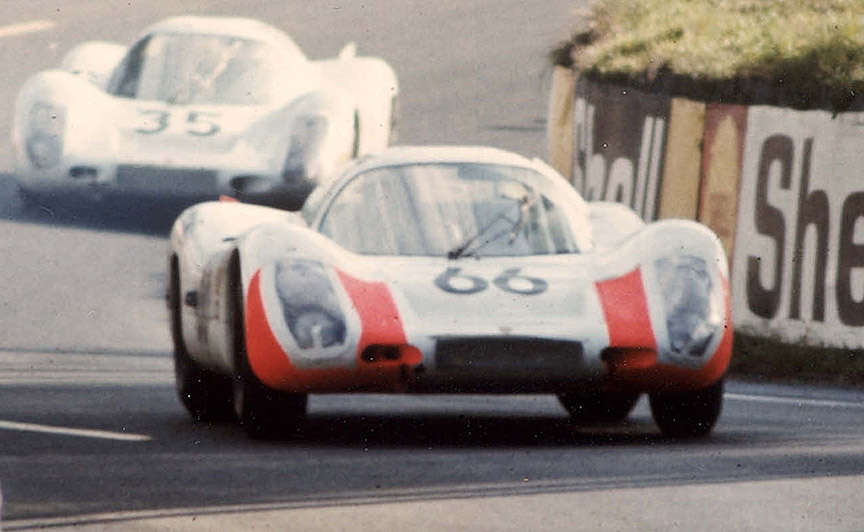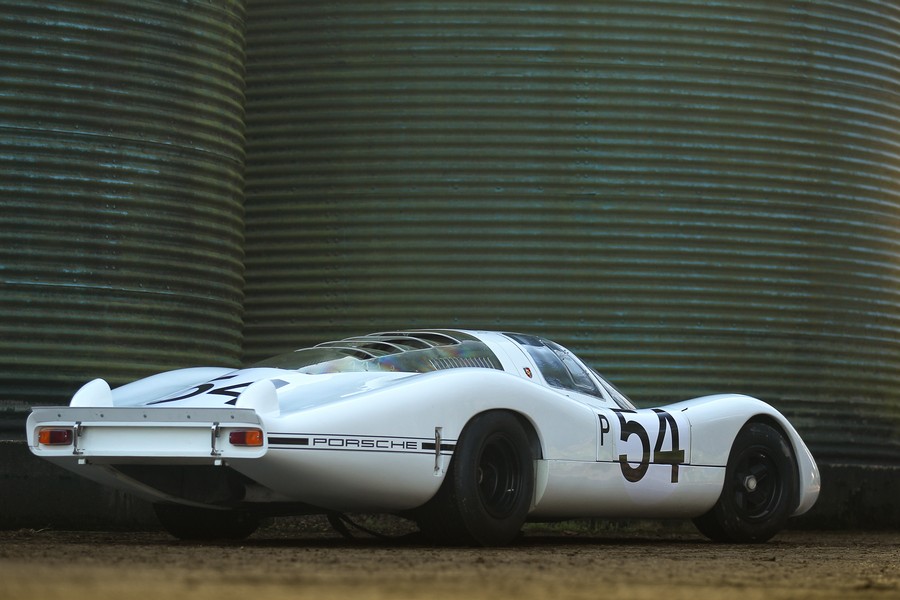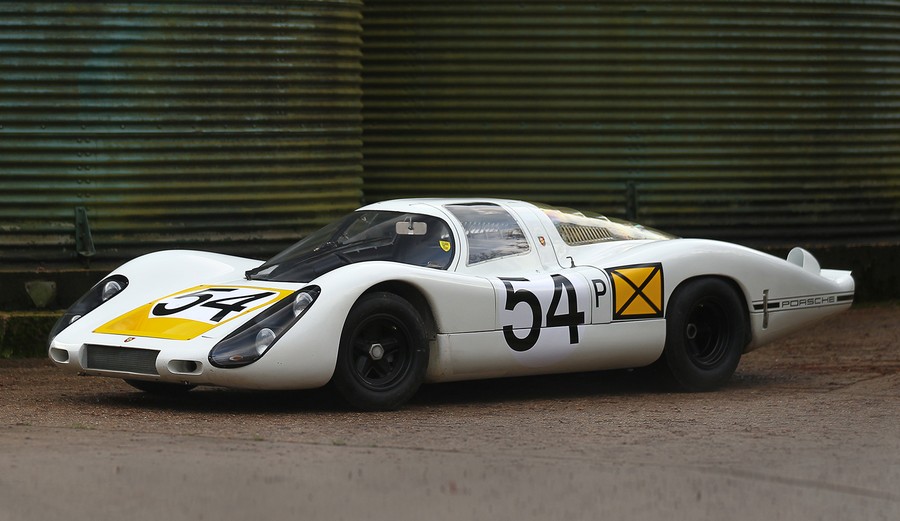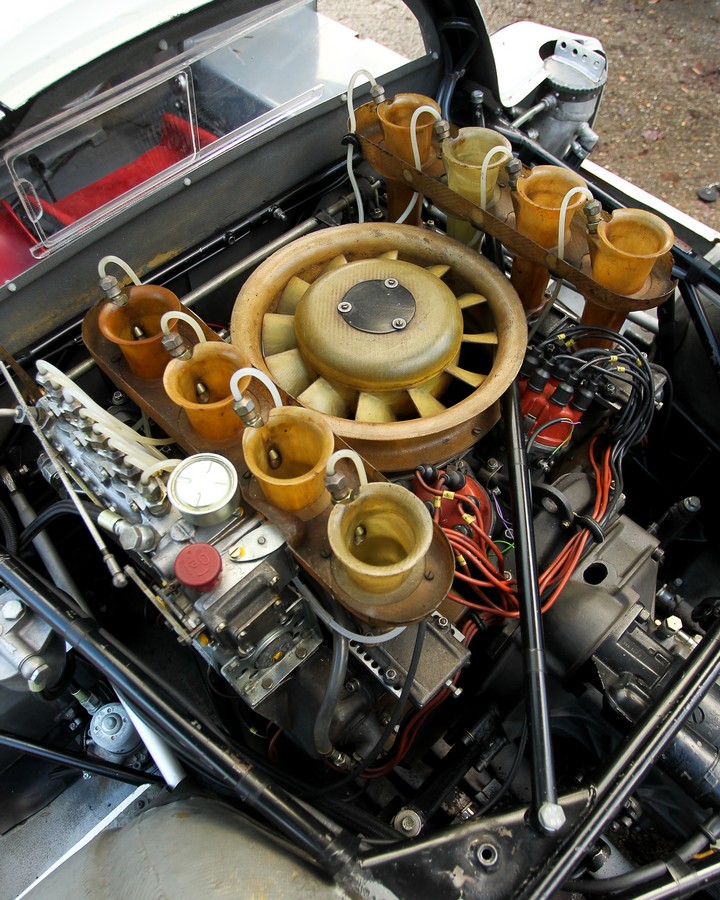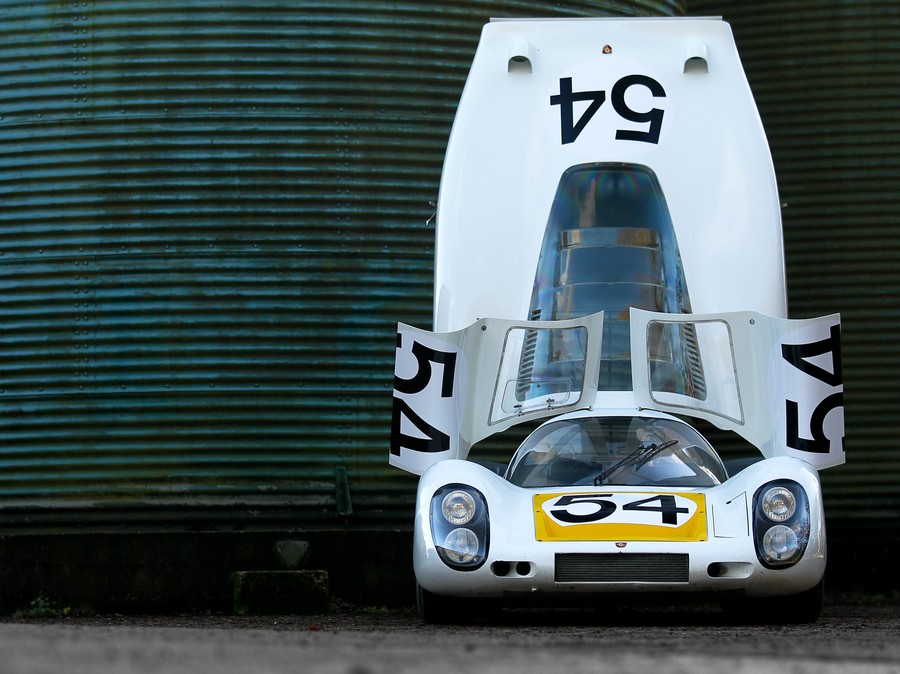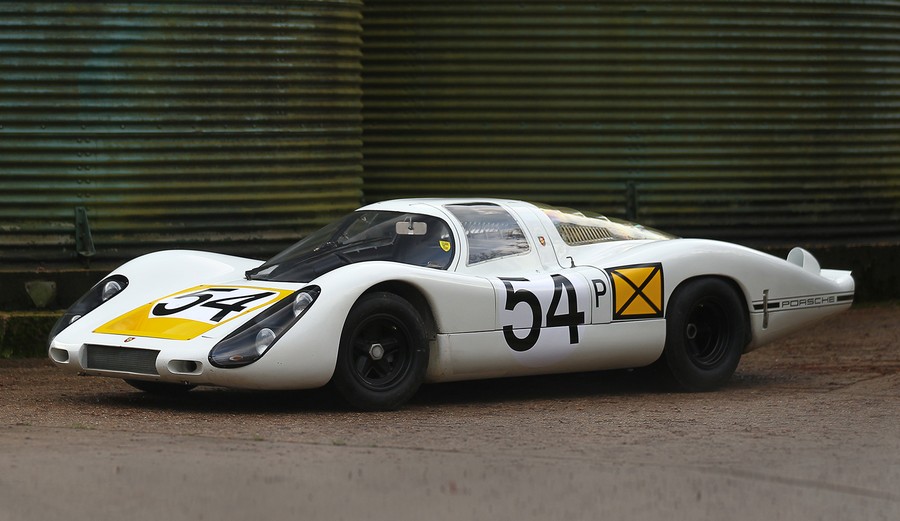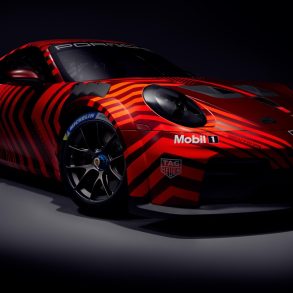Porsche 907 LH (1967 – 1968)
Premiere: 1967 April 9, Le Mans test day / Accomplishment: 1968 Daytona 24h winner / Engine: 2.0 L flat-6 or 2.2 L flat-8 / Number Produced: ~8 units / Wheelbase: 90.6 inches / Weight: 1320 lbs / Power: 256 bhp @ 8700 rpm (flat 6), 278 bhp at 8,700 rpm (flat 8)
In 1967, Porsche brought a new kind of car to Le Mans. The 907 had a small flat-six and incredibly low bodywork, was aerodynamically optimized and had tweaks like the driver side changed to optimize for certain tracks. Ford won Le Mans, but proved its worth. At the end of March, 1968, Porsche had four type 907 chassis ready, and brought them to the 24 Hours of Daytona. Fully developed, the 907 now used a 2195 cc aircooled, magnesium alloy flat-eight with Bosch fuel injection, good for 278 bhp at 8700 rpm. The 907LH (lang heck, or long tail) was slippery, fast and impossibly hard to drive. One of the cars crashed while was leading the race, while the other three impressed with 1-2-3 finish.
The 907 was the successor to the 910, although the long-tail version was last seen on the 906. Under the direction of engineering geniuses Ferdinand Piëch and Hans Mezger, the driver’s position in the 907 was built on the right side bearing in mind that most race tracks run in clockwise direction and so the driver’s weight is positioned closer to the center of the turn.
Ferdinand Piëch‘s era had begun, the era when approximately every second month a new racing car or a modification was created. For the 1967 Le Mans, the new 907 was ready. Two 907 LH (“Langheck”, long-tail) were starting the race along with eight other Porsches. Ten cars at Le Mans was a new record for Porsche. All ten had 2-litre 6-cylinder engines. The Porsches scored 5-6-7-8 after the 7-litre GT40s and 4-litre Ferraris. The fastest Porsche was the 907 LH #41 of Jo Siffert/Hans Herrmann and they naturally took the 2-litre class victory. It was the first Porsche that covered more than 4800 km at Le Mans 24 hours, pushing the average speed above 200 km/h. Imagine this achievement in 1967 with just a 2-litre normally aspirated engine, considering all the pit stops for refuelling and the driver changes!
In addition to Le Mans, in 1967, the long-tail 907 was used only at the Brands Hatch 6 hour race for which it got a bit shortened tail (still long-tail, the short tail 907 came later).
The 1968 endurance racing season started in Florida with 24 hours of Daytona. An army of five Porsche 907 LH lined up. One 907 was equipped with 2.0-litre flat-6 and the four factory team cars with 2.2-litre flat-8 that developed 275 DIN hp (202 kW / 271 SAE hp) and 23 mkp of torque (166 lb-ft / 226 Nm). Unfortunately, in the race a competitor dropped oil on the track and Gerhard Mitter lost control of his 907 #53. Going sideways to the grass, the car flipped over. Then a Ferrari lost control on the oil and hit 907 #55 driven by Dieter Spoerry. Two 907 LH were out. By the morning all the Ford GTs were out and Porsche was leading with the three remaining 907. Two 907 up front had to make way for 907 #54 on third place when the #52 907 had suffered a throttle link problem and the #51 907 had its alternator replaced. Now, the #54 car of Elford/Neerpasch and Stommelen (who had joined after Mitter had flipped their 907) was leading. For some reason, team manager Huschke von Hanstein had Herrmann and Siffert drive the leading car aswell. Half an hour before the end of the race von Hanstein, who was also a PR manager, ordered the three leading Porsches to drive side by side. American spectators were not very fond of this as it degraded the image of the sport, but to give credits to von Hanstein, it was a smart move in terms of marketing. The other thing the spectators did not like was the fact that five pilots scored first with one car, with Herrmann and Siffert taking the cups also for the second place.
The 907 LH was used only in two more races as the 907 K was also in use and the new 908 getting into shape aswell. At the 1968 Monza 1000 km Rolf Stommelen and Jochen Neerpasch won the class and finished 2nd overall with the 907 LH after a 4.7-litre Ford GT40 and at the 1968 Le Mans 24h Rico Steinemann and Dieter Spoerry also won the class and finished 2nd overall after a 4.9-litre Ford GT40. It was an unbelievable achievement for such a small engine, also the best result for Porsche at Le Mans so far.
